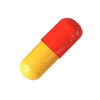 | Panmycin Active Ingredient: Tetracycline Tetracycline is an antibiotic that fights bacteria in the body. |
INDICATIONS
Panmycin is used to treat many different bacterial infections, such as urinary tract infections, acne, gonorrhea, chlamydia, and others.
INSTRUCTIONS
Take tetracycline exactly as it was prescribed for you. Take tetracycline with a full glass of water.
Take this medication on an empty stomach, at least 1 hour before or 2 hours after meals.
Do not take tetracycline with milk or other dairy products, unless your doctor has told you to. Dairy products can make it harder for your body to absorb the medicine. Shake the oral suspension (liquid) well just before you measure a dose. To be sure you get the correct dose, measure the liquid with a marked measuring spoon or medicine cup, not with a regular table spoon.Take tetracycline for the entire length of time prescribed by your doctor. Your symptoms may get better before the infection is completely treated.
DOSAGE
Take tetracycline exactly as it was prescribed for you. If you missed a dose, take the missed dose as soon as you remember. If it is almost time for your next dose, skip the missed dose and take the medicine at the next regularly scheduled time.
STORAGE
Store this medication at room temperature away from moisture and heat.
Do not use tetracycline if you are pregnant. It could cause harm to the unborn baby. Do not take this medication without telling your doctor if you are breast-feeding a baby.
Tetracycline can make birth control pills less effective.
Do not use this medication if you are allergic to tetracycline, or to similar medicines such as demeclocycline (Declomycin), doxycycline (Adoxa, Doryx, Oracea, Vibramycin), or minocycline (Dynacin, Minocin, Solodyn, Vectrin). Before taking tetracycline, tell your doctor if you have liver or kidney disease.
Before taking tetracycline, tell your doctor if you are taking any of the following drugs:
cholesterol-lowering medications such as cholestyramine (Prevalite, Questran) or colestipol (Colestid);
isotretinoin (Accutane);
tretinoin (Renova, Retin-A, Vesanoid);
an antacid such as Tums, Rolaids, Milk of Magnesia, Maalox, and others;
a product that contains bismuth subsalicylate such as Pepto-Bismol;
minerals such as iron, zinc, calcium, magnesium, and over-the-counter vitamin and mineral supplements;
a blood thinner such as warfarin (Coumadin); or
a penicillin antibiotic such as amoxicillin (Amoxil, Trimox, others), penicillin (BeePen-VK, Pen-Vee K, Veetids, others), dicloxacillin (Dynapen), carbenicillin (Geocillin), oxacillin (Bactocill), and others.Get emergency medical help if you have any of these signs of an allergic reaction: hives; difficulty breathing; swelling of your face, lips, tongue, or throat. Stop using tetracycline and call your doctor at once if you have any of these serious side effects:
severe headache, dizziness, blurred vision;
fever, chills, body aches, flu symptoms;
severe blistering, peeling, and red skin rash;
urinating less than usual or not at all;
pale or yellowed skin, dark colored urine, fever, confusion or weakness;
severe pain in your upper stomach spreading to your back, nausea and vomiting, fast heart rate;
loss of appetite, jaundice (yellowing of the skin or eyes); or
easy bruising or bleeding, unusual weakness.
Less serious tetracycline side effects may include:
sores or swelling in your rectal or genital area;
mild nausea, vomiting, diarrhea, or stomach upset;
white patches or sores inside your mouth or on your lips;
swollen tongue, trouble swallowing; or
vaginal itching or discharge.
 Flagyl ERFlagyl ER is used for treating certain bacterial infections of the vagina (bacterial vaginosis).as low as $0.29
Flagyl ERFlagyl ER is used for treating certain bacterial infections of the vagina (bacterial vaginosis).as low as $0.29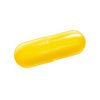 AmoxilAmoxil is used to treat many different types of infections caused by bacteria, such as ear infections, bladder infections, pneumonia, gonorrhea, and E. coli or salmonella infection. as low as $0.44
AmoxilAmoxil is used to treat many different types of infections caused by bacteria, such as ear infections, bladder infections, pneumonia, gonorrhea, and E. coli or salmonella infection. as low as $0.44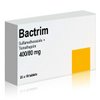 BactrimBactrim is used to treat ear infections, urinary tract infections, bronchitis, traveler's diarrhea, and Pneumocystis carinii pneumonia.as low as $0.39
BactrimBactrim is used to treat ear infections, urinary tract infections, bronchitis, traveler's diarrhea, and Pneumocystis carinii pneumonia.as low as $0.39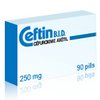 CeftinCeftin is used for treating bacterial infections (sinus, skin, lung, urinary tract, ear, and throat). It may also be used to treat Lyme disease and gonorrhea.as low as $3.45
CeftinCeftin is used for treating bacterial infections (sinus, skin, lung, urinary tract, ear, and throat). It may also be used to treat Lyme disease and gonorrhea.as low as $3.45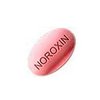 NoroxinNoroxin is used to treat bacterial infections of the prostate and urinary tract. Noroxin also treats gonorrhea.as low as $0.43
NoroxinNoroxin is used to treat bacterial infections of the prostate and urinary tract. Noroxin also treats gonorrhea.as low as $0.43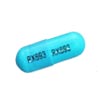 ClindamycinClindamycin is an antibiotic that fights bacteria in the body.Clindamycin is used to treat serious infections caused by bacteria.as low as $1.18
ClindamycinClindamycin is an antibiotic that fights bacteria in the body.Clindamycin is used to treat serious infections caused by bacteria.as low as $1.18